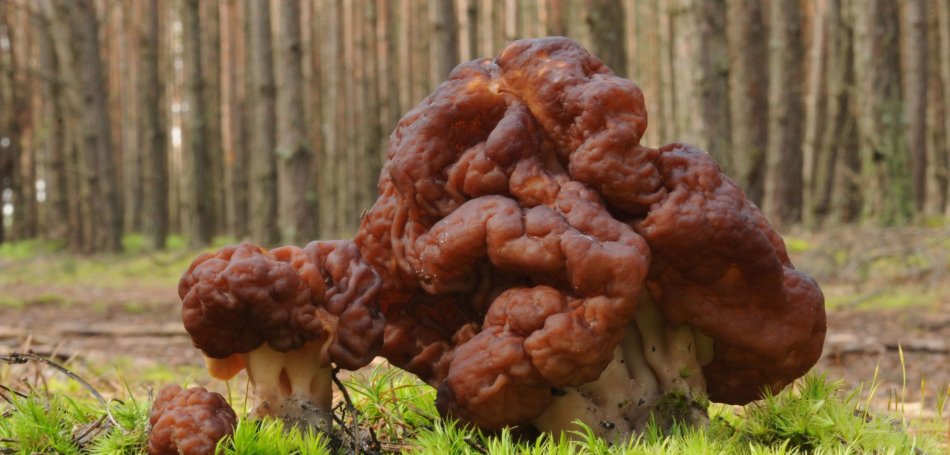
- publicado 21.10.2023
- por Cuenqueando
- setas toxicasmicologia
The 5 most toxic mushrooms in Spain
At Cuenqueando we are truly crazy about mycology and today we wanted to share our passion for this fascinating world of mushrooms. If you are one of those who love nature, who with the first rains of autumn prepare the basket and the knife at the door of the house, you are one of us. Outings in nature are to be enjoyed, so it is essential to be knowledgeable about the environment, and in the case of mushroom collecting, be very clear which mushrooms are edible and which are not. If you want to delve into the world of mycology, we recommend the Cuenqueando Mycological Routes.
Entering the magical world of mushrooms is a fascinating experience for lovers of nature and mycology. In Spain, the diversity of species is impressive, and many of them are edible and delicious. However, we must be aware that there are also poisonous mushrooms that can cause serious damage to our health and even be fatal if consumed. In this article, we will explore the five most toxic mushrooms that can be found in Spanish forests. Knowing them is essential to guarantee a safe search for mushrooms and enjoy the beauty of nature without risks. Read on and find out which mushrooms you should avoid!
1. Amanita Phalloides
The Amanita phalloides, also known as the "mushroom of death", tops our list of the most toxic mushrooms in Spain. This species is responsible for 90% of fatal poisonings worldwide. It is the deadliest mushroom for humans.
Its specimens can be in pine forests or oak groves, deciduous forests. It is easy to confuse it with other edible mushrooms, so sometimes overconfidence is on the other side of these poisonings.
A simple piece of this mushroom can end a person's life. Its ingestion causes severe liver failure, causing cell necrosis in the liver. Poisoning requires an urgent liver transplant.
The "death mushroom" is difficult to distinguish from edible mushrooms. It has a cap that can range from white to greenish yellow, a stem with a white ring and gills. Its garlic smell or bulbous base can help you identify it. But you know, the further away the better.
.jpg)
2. Cortinarius Orellanus
Another poisonous mushroom from Spain is the Cortinarius orellanus, which is as beautiful as it is dangerous. Learn to distinguish it from its edible relatives and avoid the risk of poisoning.
Cortinarius rubellus is a fungus that grows in coniferous forests and is known for its bright red color, depending on the climate it ranges from red-brown to brick red. It contains a toxin called orellanin that can cause kidney failure if consumed. It is often confused with edible mushrooms, making it a death trap for inexperienced mushroom pickers.
.jpg)
3. Amanita Muscaria
If we think of a mushroom, this is the mushroom par excellence. Perhaps because since we were children we have associated it with some drawings, we know it as "the Smurfs mushroom". Although Amanita muscaria is known for its attractive colors, its toxicity is no less lethal. The Amanita muscaria is famous for its distinctive red cap and white specks. Despite its attractive appearance, it is highly toxic and psychoactive. It can cause hallucinations, seizures and even death.
Some cultures have used this mushroom ritually for its hallucinogenic and invigorating effects, but its consumption is extremely dangerous and should be avoided at all costs.
.jpg)
4. Gyromitra Esculenta
Gyromitra esculenta is a perfect example of how toxicity can be confused with edibility. Its shape is very peculiar because it is reminiscent of a brain, its hat is made up of numerous brown folds, although the color changes from light brown to reddish depending on the humidity.
Gyromitra esculenta, also known as the "false morchella" or "false morel", is a mushroom that can easily be confused with the edible morchella. However, this mushroom contains a substance called hydrazine, which can cause serious health problems, including vomiting, diarrhea, and liver damage. Never pick mushrooms that resemble morchellas without being completely sure of their identity.
.jpg)
5. Entoloma Sinuatum
To close our list of the most toxic mushrooms in Spain, we cannot forget the Entoloma sinuatum. Its toxicity may go unnoticed at first, but knowing its characteristics is essential to avoid risks. It is often easily confused with other species, which makes it highly toxic.

Mycology is a fascinating hobby, but it is not without dangers. A lot of care and above all a lot of respect for nature. And if you go out searching on your own, remember that it is essential to respect mycorrhization, essential to maintain ecological balance and ensure the regeneration of fungi. Additionally, it is always important to be aware of local laws and regulations regarding mushroom picking, as they may vary by location. Knowing the most toxic mushrooms in Spain is essential to enjoy harvesting safely. Always remember that accurate identification is essential, and if you have any questions, consult an expert. Enjoy mycology, but do it responsibly!
 ES
ES EN
EN PT
PT